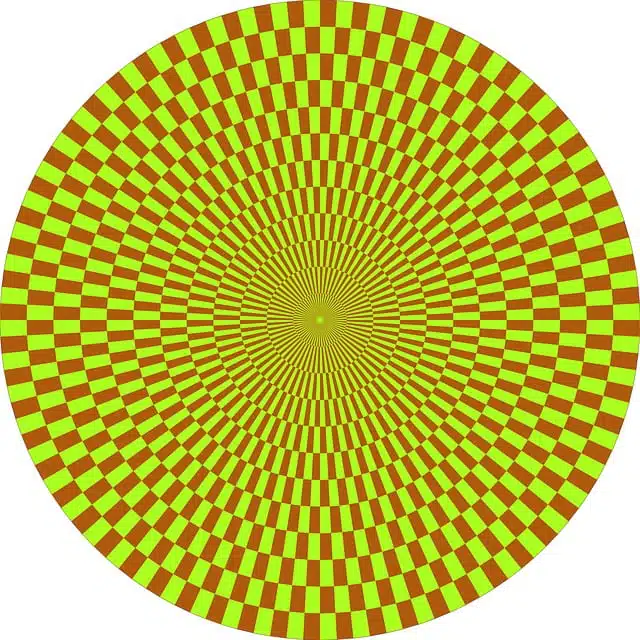
An optical illusion arises from a confusion between what the eyes perceive and what the brain interprets.
An illusion is a representation or a concept that arises from a deception of the senses or from the imagination, lacking real support. The idea of optics or optical, for its part, has several meanings: among them, that linked to vision (the ability to perceive with the eyes; that is, to see).
An optical illusion , therefore, is an image that can be perceived with sight in different ways . This particularity may have a physiological origin (due to the effect of movement, color or brightness on the eyes or brain) or cognitive origin (derived from the way in which we understand reality).
Optical illusions occur when the eye cannot clearly see certain images since they are presented in more than one form, while the brain is able to assimilate only one image at a time. In this way, confusion is generated.
Examples of optical illusion
One of the most famous optical illusions is the Rubin Cup , developed by psychologist Edgar Rubin ( 1886 – 1951 ). This Danish researcher devised a drawing that can be seen as a cup or as two faces facing each other. Depending on the point at which the observer focuses his gaze, he will perceive the cup or the faces.
The twinkling grid is another well-known optical illusion. It is a grid in which the points that are at the intersections of horizontal lines and vertical lines appear to appear and disappear. In this way, the grid appears to twinkle or flicker , although it is actually an inanimate graphic.

Rubin's Cup is among the best-known optical illusions.
Origin of the phenomenon
According to the research of Mark Changizi , a scientist at Rensselaer Polytechnic Institute in New York , the optical illusion arises as a result of a delay in the neurons that almost all human beings experience during wakefulness, that is, when we are awake. He notes that when light hits the retina, it takes about a tenth of a second until the brain can translate the signal and convert it into a visual perception of the environment .
This way of interpreting the phenomenon of optical illusion may seem untraditional to many, but it is based on a feature of our brain that many scientists had already noticed before Changizi . The difference between both positions is that the others usually focus on a supposed compensation mechanism for said delay that takes place in the motor system .
According to Changizi , compensation occurs in the visual system of our species and allows it to generate images "of the future", that is, of what it assumes will happen a tenth of a second later. Thanks to this foresight, human beings can react to events that take place in the present, even though for their brain they are part of a potential future . Catching a ball that comes flying towards us or precisely manipulating a complex tool are two of the many examples in which we need these predictions to emerge successfully and unscathed.
In a television interview, Changizi pointed out that the optical illusion occurs when the brain produces an incorrect prediction of the future, that is, one that does not match reality. Some of the images mentioned in the previous paragraphs, as well as others that give us the sensation of moving along a tunnel or that objects are at different distances from us, among many other possibilities, are designed to cause shock. intentionally this " error " in our brain. In short, the optical illusion occurs as a result of a limitation of our mind.
